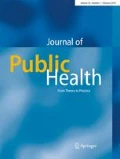Abstract
Aim
The premature loss of a deciduous tooth may disrupt the normal development of the occlusion, leading to orthodontic treatment need. This prospective study aimed to assess the association between premature deciduous tooth loss and malocclusion development and, consequently, orthodontic treatment need.
Subjects and methods
A total of 110 children (mean age: 6.4 years) participated in this study. The children were divided into two groups: an exposed group with premature deciduous tooth loss (n = 56) and an unexposed group without premature deciduous tooth loss (n = 54). Their clinical charts were analyzed and clinical examinations were performed according to the criteria of the Dental Aesthetic Index (DAI). Both groups were reassessed on average 6.5 years after the initial records. Statistical analysis involved the chi-square test and multiple logistic regression (p > 0.050).
Results
The premature loss of maxillary molars was significantly associated with crowding (p < 0.001) and increased overjet (p = 0.001). The premature loss of mandibular molars was associated with crowding in the mandibular arch (p < 0.001). Orthodontic treatment need was associated with premature deciduous tooth loss (p < 0.001) and the number of missing teeth (p < 0.001). Children with premature deciduous tooth loss exhibited a greater need for orthodontic treatment than those without premature tooth loss (OR = 4.88; 95% CI).
Conclusion
Premature deciduous tooth loss is a determinant factor for the establishment of malocclusion and consequent increased need for orthodontic treatment.

Similar content being viewed by others
References
Ak G, Sepet E, Pinar A, Aren G, Turan N (2005) Reasons for early loss of primary molars. Oral Health Prev Dent 3:113–117
Alsheneifi BDS, Hughes DMD (2001) Reasons for dental extractions in children. Pediatr Dent 23:109–112
Bernabé E, Flores-Mir C (2006) Orthodontic treatment need in Peruvian young adults evaluated through dental aesthetic index. Angle Orthod 76:417–421
Brazil. Ministry of Health. Project SB Brazil 2003: Oral Health Status of the Brazilian Population 2002–2003: main results. Brasília (DF): Ministry of Health; 2003
Cons NC, Jenny J, Kohout FJ (1986) DAI: The Dental Aesthetic Index. College of Dentistry, University of Iowa, Iowa City, Iowa
Dhar V, Bhatnagar M (2009) Dental caries and treatment needs of children (6–10 years) in rural Udaipur, Rajasthan. Indian J Dent Res 20:256–260
Hoffding J, Kisling E (1978) Premature loss of primary teeth, part I: its overall effect on occlusion and space in the permanent dentition. ASDC J Dent Child 45:279–283
Jenny J, Cons NC (1996) Establishing malocclusion severity levels on the Dental Aesthetic Index (DAI) scale. Aust Dent J 41:43–46
Kisling E, Hoffding J (1979) Premature loss of primary teeth: Part III, drifting patterns for different types of teeth after loss of adjoining teeth. J Dent Child 46:34–38
Lin YT, Chang LC (1998) Space changes after premature loss of the mandibular primary first molar: A longitudinal study. J Clin Pediatr Dent 22:311–316
Lin Y, Lin W, Lin YJ (2007) Immediate and six-month space changes after premature loss of a primary maxillary first molar. J Am Dent Assoc 138:362–368
Marques CR, Couto GB, Orestes Cardoso S (2007) Assessment of orthodontic treatment needs in Brazilian schoolchildren according to the Dental Aesthetic Index (DAI). Community Dent Health 24:145–148
Ngan P, Alkire RC, Fields H Jr (1999) Management of space problems in the primary and mixed dentitions. J Am Dent Assoc 130:1330–1339
Northway WM (2000) The not-so-harmless maxillary primary first molar extraction. J Am Dent Assoc 131:1711–1720
Owen DG (1971) The incidence and nature of space closure following the premature extraction of deciduous teeth: a literature study. Am J Orthod Dentofacial Orthop 59:37–49
Padma Kumari B, Retnakumari N (2006) Loss of space and changes in the dental arch after premature loss of the lower primary molar: A longitudinal study. J Indian Soc Pedod Prev Dent 24:90–96
Park K, Jung DW, Kim JY (2009) Three-dimensional space changes after premature loss of a maxillary primary first molar. Int J Paediatr Dent 19:383–389
Richardson ME (1965) The relationship between the relative amount of space present in the deciduous dental arch and the rate and degree of space closure subsequent to the extraction of a deciduous molar. Dent Pract Dent Rec 16:111–118
Tessarollo FR, Feldens CA, Closs LQ (2012) The impact of malocclusion on adolescents’ dissatisfaction with dental appearance and oral functions. Angle Orthod 82:403–409
Tunison W, Flores-Mir C, ElBadrawy H, Nassar U, El-Bialy T (2008) Dental arch space changes following premature loss of primary first molars: a systematic review. Pediatr Dent 30:297–302
Viglianisi A. Effects of lingual arch used as space maintainer on mandibular arch dimension: a systematic review. Am J Orthod Dentofacial Orthop 2010; 138:382.e1-4.
Zamon EI, Kenny DJ (2001) Replantation of avulsed primary incisors: a risk-benefit assessment. J Can Dent Assoc 67:386
Acknowledgements
This study was funded by the Brazilian fostering agencies Coordenação de Aperfeiçoamento de Pessoal de Nível Superior (CAPES), Conselho Nacional de Desenvolvimento Científico e Tecnológico (CNPq) and Fundação de Amparo à Pesquisa do Estado de Minas Gerais (FAPEMIG). Providers of funding had no role in the study design, data collection and analysis, publishing decisions or preparation of the manuscript.
Author information
Authors and Affiliations
Corresponding author
Ethics declarations
Conflict of interest
The authors do not have any conflict of interest.
Rights and permissions
About this article
Cite this article
Martins-Júnior, P.A., Ramos-Jorge, M.L., de Paiva, S.M. et al. Premature deciduous tooth loss and orthodontic treatment need: a 6-year prospective study. J Public Health 25, 173–179 (2017). https://doi.org/10.1007/s10389-016-0775-y
Received:
Accepted:
Published:
Issue Date:
DOI: https://doi.org/10.1007/s10389-016-0775-y




